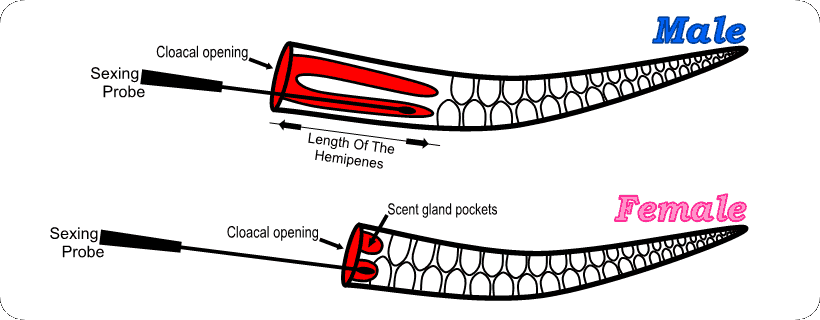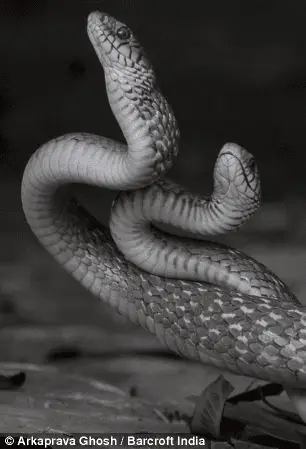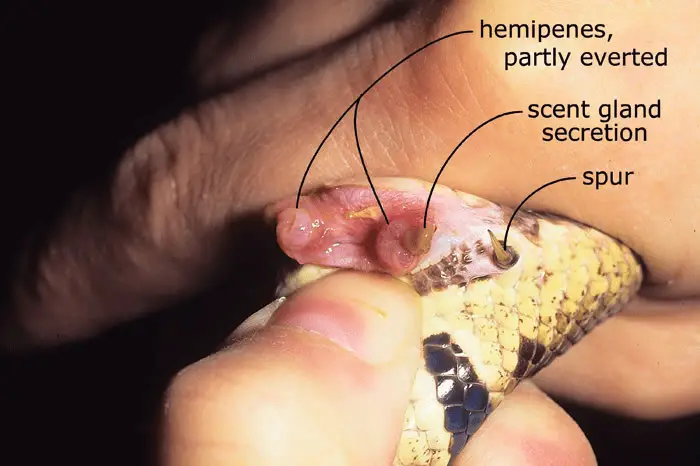Identifying the gender of snakes is not only an important matter when it comes to the ecology and management of their populations, but it is also important for understanding their overall behavior as well. For you to be successful in breeding them in captivity, you must be able to precisely identify a female from a male snake. There is no obvious way for you to physically determine the sexes of most snakes right there and then, but through the use of traditional methods, their gender can be identified through their physical characteristics.
Nowadays, there are newer methods that are less harmless that will determine the snake’s gender accurately, and it is through DNA sampling. However, DNA sampling is quite pricey compared to traditional methods of sex; that is why traditional methods are still a good-to-know knowledge, especially for new snake breeders.
Cloacal Popping
This sexing method is applicable to all hatchlings of any snake species. This method will conveniently let you know the snake’s gender without the need for any tools. Make sure that if you use the popping method, you are sure that the snake is still within 1-2 weeks after hatching because when the snake reached its first month, they gain sufficient muscle control.
If your snake is a male, they have the ability to hide their hemipenes if they sense that their cloacal opening is being touched; that is why they can be identified as females. Since you are holding a snake that had just hatched, their bodies are quite fragile and may be susceptible to spine compression, so must be gentle in pressing their bodies.
Steps in Doing Cloacal Popping
Step 1: The first step is to let another person hold the head of the snake because while doing the process, the snake may do some defense mechanisms such as biting. Locate their cloacal opening and place your one thumb just underneath the anal scale while your other thumb should hold the subcaudal surface near the tip of the tails.
Step 2: While you are placing a gentle pressure underneath the cloacal opening, gently push the tail of the snake towards in the cloacal opening direction because the increased pressure on the tail will generate a pressure on the vent for the snake’s organ to pop-out.
Step 3: If the snake is a male, their hemipenes will pop-out that is characterized by pinkish or reddish rods that are situated on each side of the cloacal opening. If it is a female, you will see an erected scent gland papillae that look like a small hemipenis, but it is only described as a red tip.
Cloacal Probing

This method requires you to make use of stainless steel that is smooth, blunt, and lubricated so as not to cause harm to your snake. This is not a surgical procedure, but it is advisable to make use of an appropriate rod or probe because the use of an incorrect probe may inflict harm on your snake. The largest probe is always ideal for it to comfortably pass into the snake’s organ, whether it is a male or female.
Steps in Doing Cloacal Probing
Step 1: Since this method is applicable to mature snakes, you need the help of another person to keep them still in place while they hold the head part of the snake. Turn the snake upside down and locate the cloaca.
Step 2: Insert the probe into the cloacal opening towards the direction of the tip. Do it gently so that the snake won’t feel anything. Your goal is to look at how far the probe can slip towards the base of the tail.
Step 3: If the probe travels at a short distance, there is a possibility that the snake is a female, and if the probe traveled at quite a distance, it could be possibly a male. To be accurate, you need to count the scales up to where the probe stopped. Depending on the size and type of snake, if the probe stopped at around 2-9 sub-caudals, your snake is a female, but when the probe stopped at around 12-16 sub-caudals, the snake is a male.
Sexually Dimorphic Characters
There is no to minimal differences in the snake’s physical attributes. The few snake species that exhibit gender-specific observable characteristics are visible on the snake’s spurs, tails, and even in their color for some snake species. The most common is the appearance of spurs. It is believed that the spurs of males are more pronounced because it is used for courtship and combat. The size of the spurs is larger for larger snakes while it is smaller for small snakes; that is why it can be detected easily for larger snakes. The spurs of the males tend to have a thicker base and look larger with an inward hook while the spurs of females are comparatively small with no tips.
Another basis for differentiating a male from a female snake is through the length differences of the tails. This way of distinguishing gender depends on the type of snake. For example, pythons, boas, sand boas, garter snakes, and pitvipers that are adult females tend to appear larger than the males, so significantly, their tails look longer and wider as well. For the snakes, kingsnakes, king Cobras, rattlesnakes, and rat snakes, adult males tend to be larger than females, so the appearance of the male’s tails is longer and wider. It goes to show that the use of tail length method is not accurate for all snake species and it is quite an intricate method if you will just base your judgments on this method alone.
Behavior

A male and a female snake differ in behavior and temperament, especially during the breeding or mating season. The males tend to be more aggressive, active, alert, and they are the ones who would usually perform courtship dances. However, experts propose that this method is not an accurate basis for their gender because there are snake species that exhibit female dominance behavior like in courtship acts, and there are also snake species that are into male-male copulations such as pythons.
During the shedding period, if you are a great observer, you can see traces of shed skin from the hemipenes that would give you an idea that the snake is male. You may need to know the appearance and shape of their hemipenes for you to judge a shed skin from their organ. Another basis that a snake is male through their behavior is when you see small deposits of sperm around their cage or even in their water bowls. You may need to know the appearance of their sperm for you to distinguish a sperm discharge from a regular discharge.
DNA Testing
Molecular sexing or DNA testing is another accurate method for you to know the gender of the snake. This may not be the cheapest and practical way in determining the sex of your snake, but it is said that it is the most accurate method through the use of technology and is done by experts to ensure that the snake won’t be harmed. The DNA sampling makes use of the snake’s blood, venom, skin remnants and shedding, and eggshell membranes.
Final Thoughts
This definitive guide for sexing snakes is useful information for snake breeders and for captive owners as well to know more information about the snake that you have. If you know the gender of your snake, it would be easier for you to give them proper care depending on their sexual orientation. Especially for female snakes that need special care and attention during the breeding season. If you do not know their gender, it would be difficult for you to prepare for the special occasions in their lifecycle.



